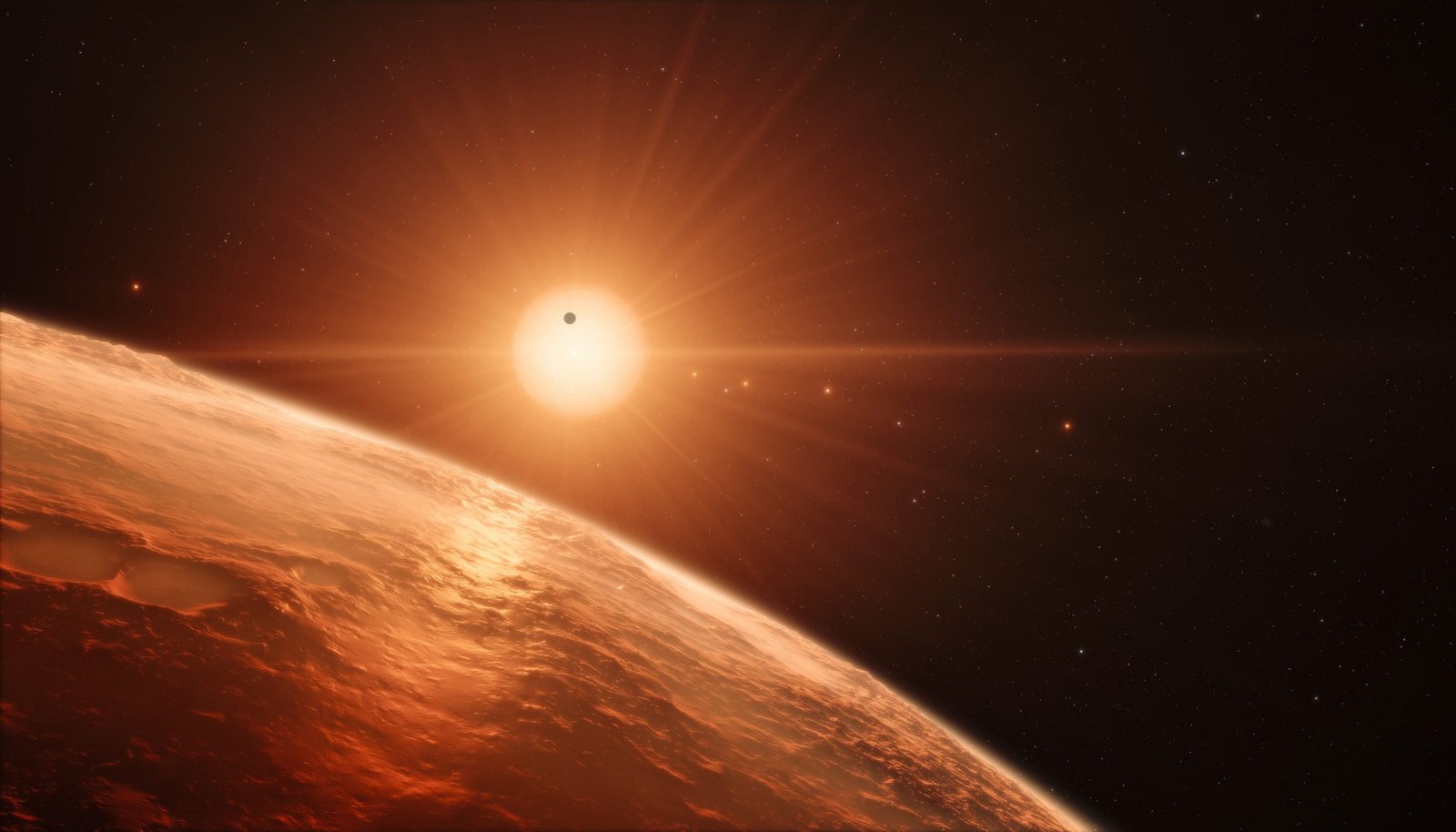By analyzing the data, collected by the Hubble Spacecraft, an international team of scientists has discovered that five Earth-sized planets from TRAPPIST-1 are likely to be full of substantial amounts of water, which may one day make them completely inhabitable for a human being.
Since its discovery in 2016, the ultracool dwarf TRAPPIST-1planet, located 39 light years away has been an intriguing topic for astronomers. With three planets in the habitable zone, then distant star system shows promising to host life some day. Now in a recent breakthrough, a team of scientists has discovered the possible presence of water in three habitable planets of the star system. For the observation of the TRAPPIST-1, researchers took more than three months and used the Space Telescope Imaging Spectrograph (STIS) aboard Hubble Space telescope.
During the research period, they studied the quantity of inward ultraviolet or UV radiation, received by each of the seven planets of the TRAPPIST-1 system, and conducted a series of calculations for determining how this emission might be dominating the amount of water on each planet. After an extensive analysis, researchers now have concluded that the two innermost planets of the star system are more likely to as dry as a fillet, but the remaining five, three out of which are orbiting in the habitable zone of the star system, potentially hold large water bodies on their surface.
As the study paper claimed, it is possible that the six innermost planets of the TRAPPIST-1system, coated with the maximum levels of ultraviolet radiation, could have lost nearly worth of 20 Earth’s Ocean water some 8 billion years ago. However, the three potentially habitable planets could have lost less water than others and currently are also wetter enough to host life. By measuring the amount of UV radiation in the TRAPPIST-1, researchers had estimated the quantities of water that these potentially-habitable orbs could have misplaced some 8 billion years ago when the system was formed. The study was led by Swiss astronomer Vincent Bourrier from the Geneva Observatory in Switzerland and colleagues.





